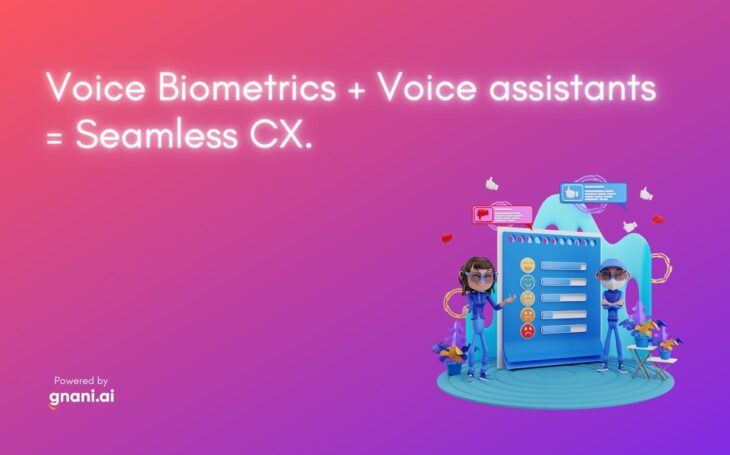
With the rise of mobile devices and voice assistants, there is an increasing demand for voice biometrics. This technology can be used to authenticate users and provide them with a seamless customer experience (CX).
There are many benefits of using voice biometrics for CX. For example, it can help to reduce fraudulent activities such as identity theft. In addition, it can also improve customer satisfaction by reducing the need for customers to remember multiple passwords or PINs.
Voice biometrics can also be used to create a more personalised customer experience. By analysing the user’s voice, businesses can gain insights into their preferences and behaviour. This information can then be used to provide a more tailored service that meets their specific needs.
Integrating voice biometrics in voice assistants:
As voice assistants become more popular, there is an opportunity to integrate voice biometrics into these devices. This would provide a more seamless and convenient experience for users. In addition, it would also allow businesses to authenticate users and collect valuable data about their preferences and behaviour.
Voice biometrics offer a number of benefits for businesses and customers alike. By integrating this technology into voice assistants, businesses can provide a more convenient and personalised customer experience. In addition, they can also reduce fraudulent activities and improve customer satisfaction.
In order to provide a seamless CX, businesses need to ensure that their voice biometrics solution is integrated with their existing systems and processes. This will enable them to provide a consistent experience across all channels.
Voice biometrics is a powerful tool that can be used to improve the customer experience. However, it is important to remember that this technology should be used as part of a wider CX strategy. businesses need to consider how they can use voice biometrics to complement other customer-centric initiatives. Only by taking a holistic approach will they be able to deliver a truly seamless customer experience.
Challenges:
Despite the many benefits of voice biometrics, there are some challenges that need to be considered. For example, this technology can be expensive to implement and maintain. In addition, it is important to ensure that the solution is able to accurately identify different voices. Otherwise, it could lead to false positives or negatives.
Another challenge is that voice biometrics requires users to speak clearly in order to be effective. This can be difficult for some people, particularly those who have a strong accent. As such, businesses need to consider how they can make the technology more accessible for all users.
Finally, it is worth noting that voice biometrics is not foolproof. There are always going to be ways for criminals to bypass the system. However, by using voice biometrics as part of a wider CX strategy, businesses can significantly reduce the risk of fraud and improve the customer experience.
Voice assistants need to understand when speakers are speaking and when others are. Moreover, background noises create confusion for the voice assistant to differentiate between authentication voice
What are your thoughts on using voice biometrics for CX? Let us know in the comments below!




